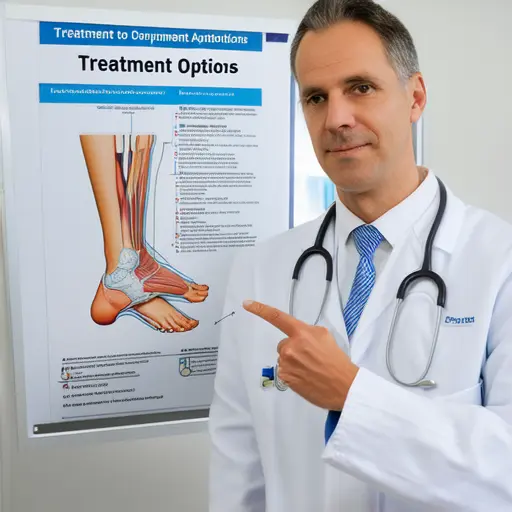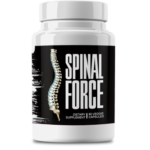This Village-Made Chinese Pain Reliever Eliminates Back And Joint Pain!
Affordable Sprained Ankle Treatment Near Me – Get Help Now

Affordable Sprained Ankle Treatment Near You – Get Back on Your Feet Faster
Ouch! If you've just rolled or twisted your ankle, welcome to the club—ankle sprains are incredibly common. Whether it happened during your morning run, a clumsy misstep, or that intense pickup basketball game, getting the right sprained ankle treatment nearby makes all the difference for healing properly. Skip treatment, and you might deal with lingering pain or even re-injury down the road. In this guide, we’ll walk you through spotting, treating, and preventing ankle sprains—plus how to find budget-friendly care in your neighborhood.
Sprained Ankle 101: What’s Really Going On?
When you sprain your ankle, those tough ligament bands that keep your joint stable get stretched or torn—usually from a sudden twist or awkward landing. While mild sprains might bounce back with some TLC at home, serious ones often need professional help to avoid long-term trouble.
How Do Ankle Sprains Actually Happen?
Picture this: your foot rolls inward (the classic "rolled ankle") or outward, forcing ligaments beyond their limits. Common culprits include:
- Sports like basketball or soccer where quick pivots are king
- Hiking trails or sidewalks with hidden uneven spots
- Wearing flimsy shoes that offer zero support
- Old ankle injuries that never fully healed (weak ligaments love to re-injure)
Is It Really a Sprain? Look for These Telltale Signs
Wondering if you need professional sprained ankle treatment near you? Watch for:
- Sharp pain when you try to put weight on it
- Swelling that makes your ankle look like a balloon
- Tenderness that makes even light touches hurt
- Stiffness that limits your usual range of motion
- That unsettling "wobbly" feeling when you stand
Why Playing Tough Guy With a Sprained Ankle Backfires
Sure, mild sprains might heal solo, but ignoring serious ones can lead to:
- An ankle that gives out at random (chronic instability)
- Early arthritis setting up shop in your joint
- Muscles weakening from lack of proper rehab
A specialist can pinpoint whether you're dealing with a Grade I (mild), II (moderate), or III (severe) sprain—and get you on the right recovery plan.
Finding Top-Notch Sprained Ankle Treatment in Your Area
Not all clinics are created equal. Here's how to separate the best from the rest.
What Makes a Great Ankle Sprain Treatment Provider?
- Credentials matter: Seek out orthopedic docs, sports medicine specialists, or physical therapists with ankle expertise.
- Experience counts: Clinics that regularly treat athletes often have killer rehab programs.
- Real patient reviews: Dig into Google reviews or Healthgrades for unfiltered feedback.
Where to Start Your Search
Try looking at:
- Orthopedic centers (they live for joint issues)
- Sports medicine clinics (pros at getting athletes back in the game)
- Physical therapy offices (for targeted rehab)
- Urgent care (if you need immediate pain relief)
Must-Ask Questions Before You Commit
- "Does this fit under my insurance plan?" (Because surprise bills are the worst)
- "What's the usual game plan for someone with my level of injury?"
- "Can I get seen today if this pain gets worse?"
Your Treatment Options Explained
What to expect based on how badly you're hurt:
The Famous RICE Method (Your First 72 Hours)
This golden standard helps big time in the beginning:
- Rest: Seriously—stay off that foot.
- Ice: 15-20 minutes on, 2-3 hours off (no frozen peas directly on skin!)
- Compression: Snug (not cutting off circulation) wrap to fight swelling
- Elevation: Prop it up higher than your heart when possible
Physical Therapy: Where the Magic Happens
For moderate to severe sprains, a PT can guide you through:
- Strength builders (think resistance bands and calf raises)
- Balance drills (wobble boards prevent future spills)
- Mobility work (getting your full range back)
When Things Get Serious: Braces and (Rarely) Surgery
Surgery's only for complete ligament tears, but many folks benefit from supportive braces or walking boots during recovery.
Managing Costs Without Sacrificing Care
Let's talk money—because healthcare shouldn't break the bank.
What Treatment Might Cost You
- Urgent care visit: Roughly $100-$200 out of pocket
- Physical therapy sessions: $50-$150 per pop
- MRI (if needed): $500-$3,000 (yikes—check insurance first)
Navigating Insurance Like a Pro
Most plans cover diagnostics and rehab, but watch for:
- Specialist copays that add up fast
- Pre-approval requirements for PT sessions
Budget-Friendly Alternatives
- Community health clinics (often sliding scale fees)
- University sports medicine programs (discounted student-led care)
- Nonprofit PT centers with income-based pricing
When to Tough It Out at Home vs. Calling the Pros
Grade I sprains might heal with RICE, but get help if:
- Pain amps up after two days
- Walking feels like stepping on knives
- Swelling won't quit despite your best efforts
Keeping Your Ankles Safe in the Future
Because nobody wants a repeat performance:
- Strengthen those ankles (toe raises are boring but effective)
- Ditch unsupportive shoes (yes, even your favorite worn-out sneakers)
- Practice balance (yoga or simple single-leg stands help)
Wrapping Up
Quality sprained ankle treatment near you means healing right the first time. If pain sticks around more than a few days, don't tough it out—get it checked. Your future self (and ankles) will thank you!
Dealt with a gnarly ankle sprain before? What worked for your recovery? Drop your tips in the comments!








